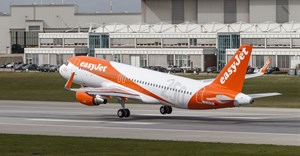
What does it take to become a commercial airline pilot in SA?

It is, therefore, surprising that there is a worldwide shortage of pilots. Leading aviation consultants AirInsight projects that there is a global requirement for about 31,000 new pilots annually. The average age of pilots is also increasing, suggesting younger people are not attracted to the profession.
Jimmy Conroy, chairman of the SAA Pilots Association (SAAPA) says this apparent contradiction is explained by the fact that being a pilot comes at a high cost to one’s personal life and follows a demanding and expensive process to qualify for.
It all starts with a dream and a goal
“It all starts with a dream and a goal – to become an airline pilot. The first step is to pass matric with mathematics and/ or science at advanced grade, with a C symbol or higher. Thereafter, you must pass a Class 1 medical from an aviation medical examiner, enroll at a training school and commence with a Student Pilots Licence.”
This involves studies that make a university honours degree pale in comparison. The Student Pilot’s Licence requires Air Law and Aircraft Technical. The Private Pilot’s Licence (PPL) requires Radio licence exams and seven exams comprising of: Aviation Meteorology; Flight Performance and Planning; General Navigation; Aircraft General; Principles of Flight (Aerodynamics); Human Performance and Limitations; Air Law; and to complete, a practical flight test. Finally, completing a Private Pilot’s Licence requires approximately 45 – 50 hours flying training.
A Commercial Pilot’s Licence training involves the following advanced exams: Theoretical and oral radio licence exams; Aviation Meteorology; Flight Performance and Planning; Radio Aids and Communication; General Navigation; Instruments and Electronics; Aircraft Technical and General; Human Performance and Limitations; and Air Law.
The pass mark for examinations is 75%, following which one has to complete a practical flight test and undertake 200 - 220 flying hours.
Gaining experience no easy task
“By this stage, it is theoretically possible to fly passengers for remuneration, but few organisations will employ a new commercial pilot with just 220 flying hours,” says Conroy. “Most charter companies require a minimum of 500 hours flying time, commuter airlines require 900 hours and airlines 1,500 flying hours.
In addition, most organisations require experience encompassing twin and turbine engines which are difficult to obtain. Many gain the requisite experience by obtaining instructor’s ratings or securing positions as co-pilots on small twin engine aircraft. Others build their hours ferrying or delivering aircraft, doing parachute dropping or glider towing.”
Once a young commercial pilot finds employment at a charter company, he or she may first expect to work for a year as an ops officer in an office before flying, to pay back the cost of their training. “It’s a tough time in a young pilot’s life.” One still has to complete Instrument Rating, which requires a further six exams and a difficult practical flight test.
“Once one obtains a Commercial Pilot’s Licence with an Instrument Rating and 900 hours flying time, one becomes marketable to commuter airlines. Getting to this point will typically have taken you five years and cost up to R1 million. Once employed by a commuter airline, one will accumulate a further 800 flying hours a year, though salaries will still not be good.”
“Generally pilots will have little chance of getting into major international airlines such as SAA with less than 5,000 hours flying time,” says Conroy.
The top qualification
The top qualification is an Airline Transport Pilot’s Licence (ATPL). To acquire this, one is required to pass various subjects with a high level of applied mathematics and physics: Aviation Meteorology; Flight Performance and Planning; Radio Aids and Communications; General Navigation; Instruments and Electronics; and Aircraft Technical and General; followed by an advanced flight test.
“Once fully qualified with an ATPL and employed in an airline, one is still required to undertake continuous professional training. This consists of passing a Class 1 flying medical every year, completing each year at least two simulator checks of eight hours in time, completing a minimum of six exams and one route check per year.
“So yes, once you have done all that, being a commercial airline pilot can certainly be one of the world’s top jobs – but you’ll have earned your position,” concludes Conroy.

















